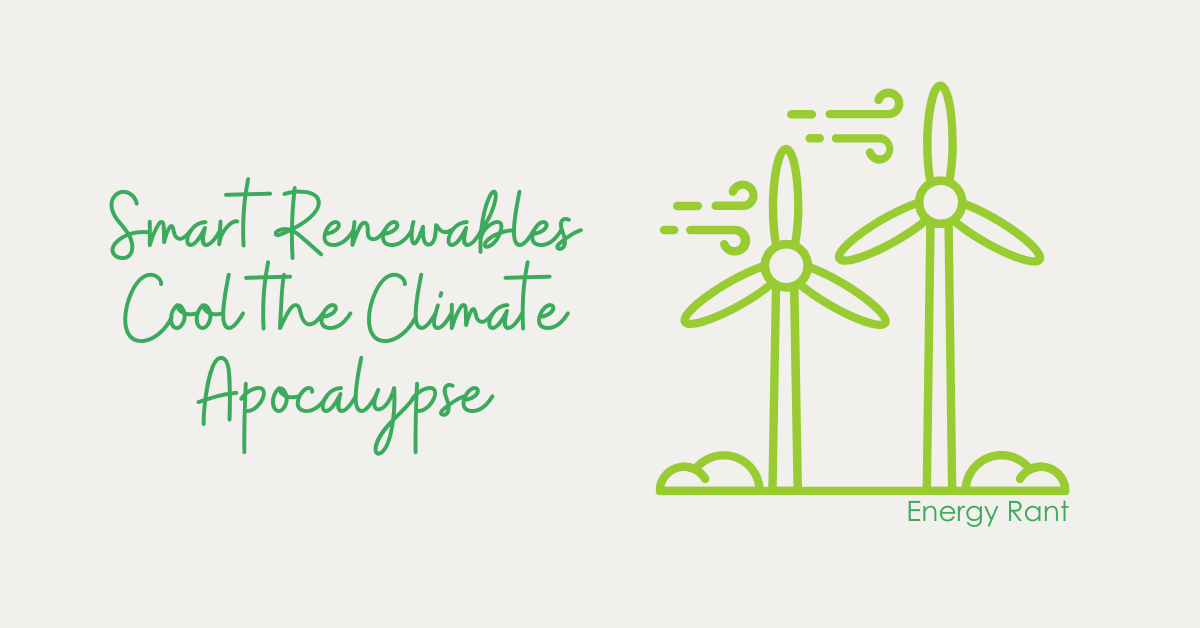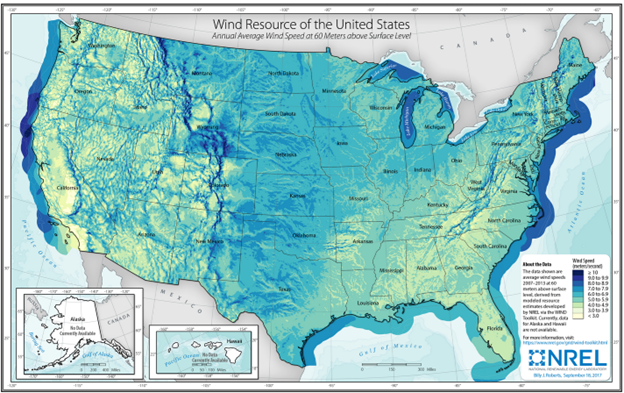
My passion is applying the right technology in the right place and at the right time for maximum effectiveness. Not coincidently, that is precisely Michaels Energy’s purpose for existence: minimizing waste and maximizing value. Last week I wrote about the gargantuan resource requirement for solar and batteries to displace a single nuclear power plant, including 40,000 acres for the panels, which, in Iowa, is worth $600 million in farmland alone. This is a D- for minimizing waste and maximizing value.
Offshore Wind
This week, we’re turning our attention to wind generation. Renewable enthusiasts need to get behind offshore wind for two crucial reasons:
- Offshore wind blows more consistently than onshore wind because no land obstructions exist.
- Offshore wind is adjacent to major population centers, mitigating the need for thousands of miles of transmission. As described last week, policymakers and commissions must determine the TOTAL cost of energy and not just the levelized cost of the generator.
Hypocrites
The very people who howl the loudest about climate change risk include mayors, ESG zillionaires like Larry Fink, and folks who live on beachfront property. They don’t believe what they are shoveling, and here is proof:
- While mayors of large coastal cities like New York, Oakland, and New Orleans paint a dire picture of climate catastrophes, their fears are absent in disclosures for municipal bond auctions. Investors get no risk premium on coastal-city bond yields[1].
- The most consistent wind resources are over water, but how much offshore wind generation are off the east and west coasts? Swallow your coffee because this will make you laugh: 7 MW = 0.0001% of our capacity needs. NIMBY.
- Oil, gas, shipping, fishing, whales, lobsters, and who knows what else take precedence over the climate apocalypse.
Red Herring Details
On a single day, in a single email from Energy Central, I have the following offshore wind claptrap and bull guano.
Clash of the Boneheads
Here we have a Massachusetts publication, Commonwealth Magazine, featuring a pissing match over who should have options to own offshore wind. (At some point, I’ll do a Rant on the dead end of renewable natural gas they discuss in the article.) The gist of the story includes gas companies wanting to use wind power to generate hydrogen via electrolysis to blend with natural gas. That would be like making wood furniture to chop up and burn in a wood stove.
Ecology Discovered by an Embarrassment
Here’s a doozer from The Washington Examiner: “We are not even in the construction stage of these industrial wind turbine grids, yet we are already witnessing a highly unusual mortality rate of these intelligent marine animals,” Rep. Jeff Van Drew (R-NJ) said in a statement Wednesday that referred to the recent spikes in deaths of both dolphins and whales. Yes indeed! Those are intelligent mammals. They read the newspapers to know what’s coming and martyr themselves for the cause.
Here is another fool’s quote from Rep. Chris Smith (R-NJ): [the offshore wind project represents a] “potentially catastrophic threat” [to the coast]. “The industrial wind farm approval process has been shoddy at best, leaving unaddressed and unanswered questions concerning the extraordinarily harmful environmental impact on marine life and the ecosystems that allow all sea creatures great and small to thrive.”
I sometimes hear “the people of [state]” or “those who voted for ___” should be embarrassed by a politician. No. Those who make unsubstantiated foolish statements should be asked for the physics and biology behind their assertions. This would be the press’s job, but the press died about 20 years ago when cable news networks competed for audiences with purely narrative-driven reporting.
Some Things to Consider
Here is one from the anti-wind National Wind Watch, which features more quotes from scientist Chris Smith of New Jersey. It asserts that offshore wind development will:
- Kill untold sea life. Won’t these offshore wind turbine structures resemble offshore oil rigs? The BBC reports, “Offshore rigs are among the most productive fish habitats in the world, according to marine biologist Milton Love who has spent 20 years studying fish populations around oil and gas platforms in California. They provide marine wildlife with food, shelter from predators, and a safe breeding ground.”
- Be toppled during a hurricane. Smith cited a Carnegie Mellon study that noted, “There is a very substantial risk that Category 3 hurricanes can destroy half or more of the turbines at some location.” Yes, indeed, they must be designed to withstand hurricanes. I trust the engineers.
- Pose a risk to shipping because blades might fall off.
- Interfere with marine vessel radar. This line of physics wasn’t up my alley, so I have no comment here.
Notice that when the timing is right, wildlife and the ecosystem is used to stop construction. Yes, folks. There will always be some critter death, habitat disruption, and even human injury and death during development. Risk and tradeoffs cannot be avoided in a civil society.
Some Conclusions on Renewables
The bottom line is smooth curves – smooth load and supply curves.
- A supply curve that goes to zero when needed and over-generates such that it is curtailed is a thorough waste of money. This is the state of wind generation in some states in the Midwest and solar in California.
- Offshore wind provides the smoothest load curve with an average capacity factor of 51% v 36% onshore. Fifty-eight percent of wind resources are offshore in 60 meters or deeper water[2].
- Solar plus thermal energy storage, which can be applied to any refrigeration, heating, and cooling load behind the meter, is likely the best solution. No T&D, distributed, and most cost-effective. Utilities need to get into this game yesterday.
[1] https://www.wsj.com/articles/lukewarm-bond-yields-belie-mayors-climate-alarm-11572303011
[2] https://css.umich.edu/publications/factsheets/energy/wind-energy-factsheet






